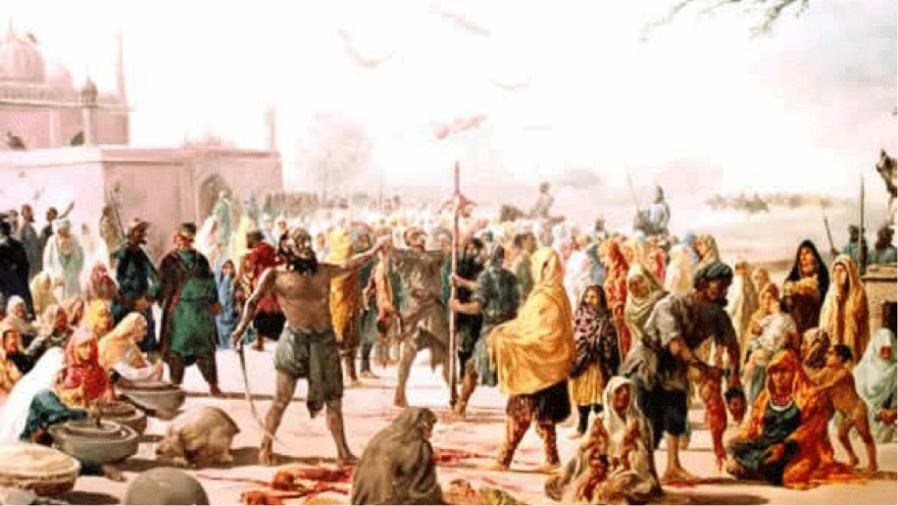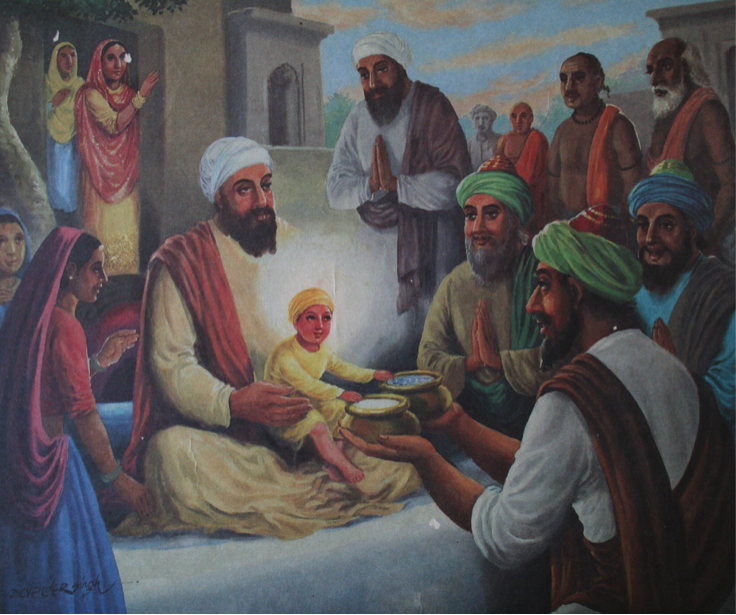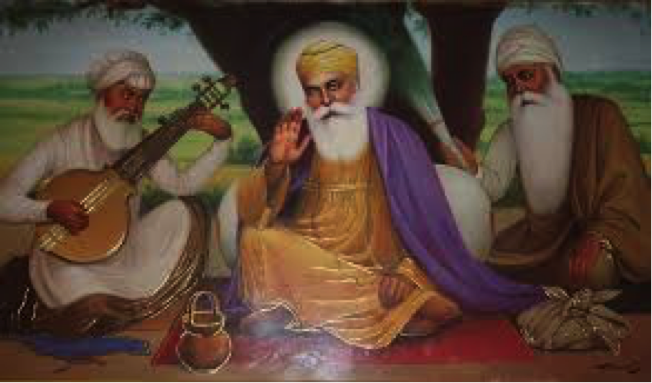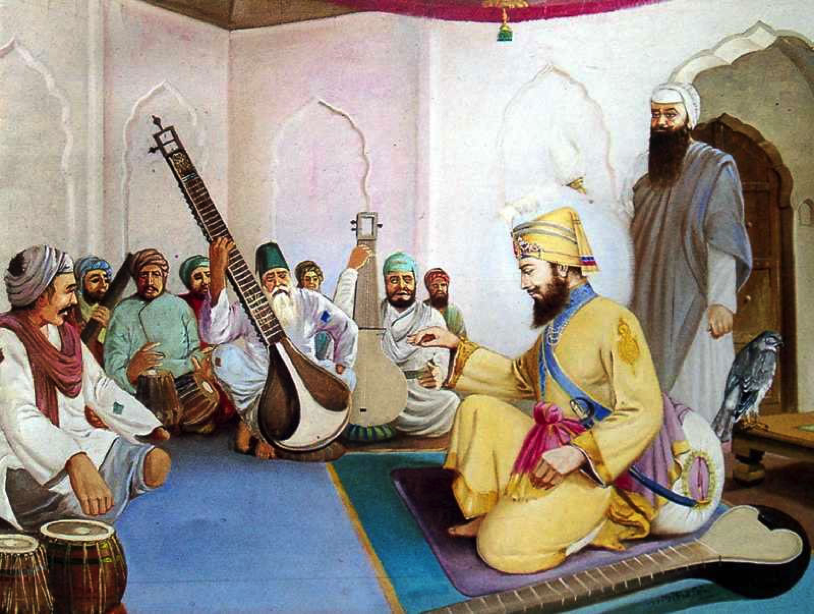By Harbans Lal, PhD., D.Litt. (hons)
In the worst days of the Mogul empire, India was in great danger that its cultural and religious diversity would be eclipsed. King Aurangzeb (1618 – 1707) created havoc by trying to convert everyone living in the empire to his version of Islam. To fully appreciate the extent of the widespread bloodshed in today’s context, one may view the Islamic State of Iraq and Syria (ISIS) as having a mission similar to the very worst excess of the Mogul Empire.

In order to understand the mentality of ISIS and its tactics, look no further than the daily pictures of horrors and insanity throughout the Middle East and the Western world. Only since 2012 has the rise of ISIS become a revelation to the West. Commencing with the self-proclamation of a Caliph by its leader Abu Bakr Al-Baghdadi, and then with the surge in Iraq and Syria, each day brings bloodshed, beheading, and the burning alive of innocents. Once launched, it occurs without stopping.
To those who know Indian history, it is obvious that the theology and actions of that era of the Mogul Kingdom were no different from ISIS today. Back then, the hostility towards other religions was very evident through the Mullahs’ orations and fatwas, such as: “It is incumbent upon Muslims to take as enemies the infidel Hindus, Sikhs, Buddhists, Jains, Sufi Muslims, and other polytheists, and to avoid their amicability,” and “Shi’ites are the most polytheist, and none of the people of passion are more lying than them, and more remote from monotheism, and their danger to Islam is very great indeed.”
This was the common rhetoric used during the kingdom of Aurangzeb. He wanted militant imposition of his religion on all others. Any sign of diversity was met by force from the Empire.
DIVERSITY: THE HALLMARK OF FUTURE SOCIETIES
It is now universally accepted that the next generation of humanity will improve the global village so that diverse societies can live together in peace and prosperity (both worldly and spiritual).
In this article, I will illustrate the role Guru Gobind Singh played in creating and spreading these values.
To do this, I have cherry picked a few examples. To fully comprehend and describe the Guru’s greatness would probably take a lifetime. Instead, I will select issues that impact civil societies globally, even though they are illustrated through examples of Sikh, Buddhist, Muslim and Hindu communities in the Indian sub-continent.
Contrary to the practice of proving that one religion is superior to another, and imposing those beliefs, Guru Gobind Singh called upon all religions to engage in the service of humanity. Let me illustrate this with a few examples.
THE GURU’S FIRST SERMON
From childhood, young Gobind engaged in inter-religious dialogue. According to our history books, the recognition of the Guru’s divinity was first acknowledged publicly at an important inter-religious event. It all began with the installation of infant Gobind to his prophetic rank. Contrary to the established practice of initiating a child prophet by the clergy of his forefathers faith, a renowned Muslim saint, Syed Bhikhan Shah, was instead given this honor. Mind you that the Guru was not born to Muslim parents.
The story goes as follows.
One day, followers of Muslim Pir Bhikhan Shah observed their leader bow towards the East during his morning prayers. Certainly it was contrary to the established Islamic practice of bowing in the direction of Kiblah.
When his followers looked astonished, the Pir responded and explained his unusual act. He said that a special child, the savior chosen by Allah, was taking birth in Patna, which is located in Eastern India. He further disclosed that he was inspired by Allah to make his way to the child’s birth place, in order to bless the newly born Gobind, and to pronounce him a prophet.
The Pir gathered his followers and led them on a pilgrimage to Patna in order to view the newborn. In Patna, although unusual for mothers of a newborn to do so, the Guru’s mother accepted the Pir’s request and brought the child out for public viewing.
The Pir presented a riddle. He placed two bowls of candy before the child; one bowl was purchased from a Hindu’s shop, and the other from a Muslim’s shop, thus signifying the two major religions of India. The riddle sought answers to an unspoken question of seeking guidance as to which religion this divine prophet would belong to. The proper response would permit the Pir to pronounce the Guru’s divinity and his prophetic authority to lead the people.
To everyone’s admiration and deep gratification, the infant Gobind Rai placed his hands in both bowls, thus indicating that he would not profile people based on religious divides. Further, it signified that all religions would be dear to him. He would also pick a holy man of a different religion to communicate his new message.
 The Muslim Pir and his Muslim companions as well as Hindu neighbors who had gathered there were thrilled and fulfilled.
The Muslim Pir and his Muslim companions as well as Hindu neighbors who had gathered there were thrilled and fulfilled.
The point is that in his very first public message Guru Gobind Singh laid the path to inter-religious engagement that sanctioned inter-religious appreciation and accommodation. Further, he chose the symbolic language of a public demonstration to communicate his first public sermon.
Although minimizing the religious divide was Guru Gobind Singh’s first sermon, it was neither a one-time event nor the first time in the Sikh tradition that such a sermon was aired.
SIKH TRADITION
The divinity of Guru Nanak was first recognized by a Muslim holy man, Rai Bullar, and not his own parents. Similarly, when Guru Nanak made his first debut after receiving the divine ordination at the banks of River Vein in Northern India he gave the following sermon to those who gathered to welcome him as a prophet. Guru Arjan paraphrased this sermon in the following hymn.
ਨ ਹਮ ਹਿੰਦੂ ਨ ਮੁਸਲਮਾਨ । ਅਲਹ ਰਾਮ ਕੇ ਪਿੰਡੁ ਪਰਾਨ – Guru Arjan, SGGS, p. 1136.
I am neither a Hindu, nor am I a Muslim (Christian, Budhhist, etc). My body and breath of life belong equally to Allah and to Raam – the God of both religions.
In the most popular painting of the founder of Sikhism, Guru Nanak is always shown with his two companions: a Hindu, Bhai Bala, and a Muslim, Bhai Mardana.
 Guru Gobind Singh reiterated the same doctrine of not profiling people into religious categories. The writers and historians amply documented Guru Gobind Singh’s teachings in this respect. He is said to teach as:
Guru Gobind Singh reiterated the same doctrine of not profiling people into religious categories. The writers and historians amply documented Guru Gobind Singh’s teachings in this respect. He is said to teach as:
ਜਾ ਤੇ ਛੂਟਿ ਗਯੋ ਭ੍ਰਮ ਉਰ ਕਾ॥ ਤਿਹ ਆਗੈ ਹਿੰਦੂ ਕਿਆ ਤੁਰਕਾ॥
When one gets rid of the false beliefs one ceases to profile people into Hindu or Muslim (Christian, Jew or Sikh).
GLOBAL IN SCOPE
Guru Gobind Singh further believed that even when an enlightened person looked far and wide, he would find the same divine spirit in all. A poet described this as:
ਸਾਰੇ ਹੀ ਦੇਸ ਕੋ ਦੇਖਿ ਰਹਿਓ ਮਤ ਕੋਊ ਨ ਦੇਖੀਅਤ ਪ੍ਰਾਨਪਤੀ ਕੇ॥ (Tav-Prasad Savayeaa)
So that no one may have any doubt, Guru Gobind Singh is said to refer, by name, various geographical regions, many linguistic and cultural groups that spread all over the continents to make one humanity. For example, the Guru described various sects, denominations or ethnicities as all adoring the same Creator.
ਪੂਰਬੀ ਨ ਪਾਰ ਪਾਵੈਂ ਹਿੰਗੁਲਾ ਹਿਮਾਲੈ ਧਿਆਵੈਂ ਗੋਰ ਗੁਰਦੇਜੀ ਗੁਨ ਗਾਵੈਂ ਤੇਰੇ ਨਾਮ ਹੈਂ ॥
ਜੋਗੀ ਜੋਗ ਸਾਧੈ ਪਉਨ ਸਾਧਨਾ ਕਿਤੇਕ ਬਾਧੈ ਆਰਬ ਕੇ ਆਰਬੀ ਅਰਾਧੈਂ ਤੇਰੇ ਨਾਮ ਹੈਂ ॥
ਫਰਾ ਕੇ ਫਿਰੰਗੀ ਮਾਨੈਂ ਕੰਧਾਰੀ ਕੁਰੇਸੀ ਜਾਨੈਂ ਪਛਮ ਕੇ ਪੱਛਮੀ ਪਛਾਨੈਂ ਨਿਜ ਕਾਮ ਹੈਂ ॥
ਮਰਹਟਾ ਮਘੇਲੇ ਤੇਰੀ ਮਨ ਸੋਂ ਤਪਸਿਆ ਕਰੈ ਦ੍ਰਿੜਵੈ ਤਿਲੰਗੀ ਪਹਚਾਨੈ ਧਰਮ ਧਾਮ ਹੈਂ ॥
ਬੰਗ ਕੇ ਬੰਗਾਲੀ ਫਿਰਹੰਗ ਕੇ ਫਿਰੰਗਾਵਾਲੀ ਦਿਲੀ ਕੇ ਦਿਲਵਾਲੀ ਤੇਰੀ ਆਗਿਆ ਮੈ ਚਲਤ ਹੈਂ ॥
ਰੋਹ ਕੇ ਰੁਹੇਲੇ ਮਾਘ ਦੇਸ ਕੇ ਮਘੇਲੇ ਬੀਰ ਬੰਗ ਸੀ ਬੁੰਦੇਲੇ ਪਾਪ ਪੁੰਜ ਕੋ ਮਲਤ ਹੈਂ ॥
ਗੋਖਾ ਗੁਨ ਗਾਵੈ ਚੀਨ ਮਚੀਨ ਕੇ ਸੀਸ ਨਯਾਵੈ ਤਿੱਬਤੀ ਧਿਆਇ ਦੇਖ ਦੇਹ ਕੋ ਦਲਤ ਹੈਂ ॥
ਜਿਨੈ ਤੋਹਿ ਧਿਆਇਓ ਤਿਨੈ ਪੂਰਨ ਪ੍ਰਤਾਪ ਪਾਇਓ ਸਰਬ ਧਨ ਧਾਮ ਫਲ ਫੂਲ ਮੋਂ ਫਲਤ ਹੈਂ ॥
The inhabitants of the East could not know Thy limit, the people of Hingala and Himalaya Mountains remember Thee, residents of Gor and Gardez sing the Praises of Thy Name.
The Yogis perform Yoga, many are absorbed in doing Pranayama and people of Arabia bound by Holy Quran remember Thy Name.
The people of France and England revere Thee, the inhabitants of Kandahar and Quraishis identify Thee; the people of the West recognize their duty towards Thee.
The inhabitants of Maharashtra and Magadha perform austerities with profound affection; the residents of Drawar and Tilang countries recognize Thee as the Abode of Dharma.
The Bengalis of Bengal, the Phirangis of Phirangistan and Dilwalis of Delhi are the followers of Thy Command.
The Rohelas of Rohu Mountain, the Maghelas of Magadha, the heroic Bangasis of Bangas and the Bundhelas of Bundhelkhand abolish their sins in Thy devotion.
Gorkhas sing Thy Praises, the residents of China and Manchuria bow their heads before Thee and the Tibetans end the sufferings of their bodies by remembering Thee.
Whosoever meditated upon Thee, they obtained perfect Grandeur; they prosper greatly with spiritual wealth, blooming flowers and ripening fruits, and praiseworthy place of ultimate abode.
Akal Ustat, 254-255, Dasam Granth, p. 13-14.
The hymn above speaks to the Guru’s recognition that faith is beyond man made boundaries.
MANY SCENARIOS ONE PURPOSE
Guru Gobind Singh’s ecumenical teachings continued to solidify and extend what he communicated as an infant, and what his predecessors had been saying for centuries. He worked tirelessly to restore confidence in the human values of diversity, freedom of faith, justice, and compassion. He challenged widespread religious bigotry among all world religions. His teachings, as defined below, emphasizing that in the eyes of Creator there was no difference among people.
ਕੋਊ ਭਿੲੳ ਮੁੰਡੀਆ ਸੰਨਿਆਸੀ ਕੋਊ ਜੋਗੀ ਭਇੳ ਕੋਊ ਬ੍ਰਹਮਚਾਰੀ ਕੋਊ ਜਤੀ ਅਨੁਮਾਨਬੋ ॥ ਹਿੰਦੂ ਤੁਰਕ ਕੋਊ ਰਾਫਸੀ ਇਮਾਮ ਸਾਫੀ ਮਾਨਸ ਕੀ ਜਾਤ ਸਬੈ ਏਕੈ ਪਹਿਚਾਨਬੋ ॥ ਕਰਤਾ ਕਰੀਮ ਸੋਈ ਰਾਜਕ ਰਹੀਮ ੳਈ ਦੂਸਰੋ ਨ ਭੇਦ ਕੋਈ ਭੁਮ ਭ੍ਰਮ ਮਾਨਬੋ ॥ ਏਕ ਹੀ ਕੀ ਸੇਵ ਸਭ ਹੀ ਕੋ ਗੁਰਦੇਵ ਏਕ ਏਕ ਹੀ ਸਰੂਪ ਸਬੈ ਏਕੈ ਜੋਤ ਜਾਨਬੋ ॥
Many believed that they became superior by accepting celibacy or undertaking many modes of meditation, by giving up material comforts, by making themselves look different, or by wearing long and matted hair or no hair. Others feel higher by joining a particular sect of Islam as, Shea, Sunni, etc. But no one should overlook the basic fact that followers of all religions are the same human beings. The Creator of all provides for the needs of all humans. There is one God of all and that God alone should be worshipped. Do not remain an ignorant and believe in anyone else except the One. All humanity is equal, each one of us carries the reflection of the Creator in us, and we are all manifestations of one Creator.
From Akal Ustat, In: Chaunnvee Banee Dasam Granth, Ed. Lal Singh, Nav Yug Publishers, Delhi, 1987, P. 92.
To spread his message of an egalitarian society based on the one-ness of God that celebrates diversity in all of its myriad forms, Guru Gobind Singh is said to relate the origin of all diversity to the One Being.
ਜੈਸੇ ਏਕ ਆਗ ਤੇ ਕਨੂਕਾ ਕੋਟਿ ਆਗ ਉਠਹਿਂ, ਆਗ ਕੇ ਕਨੂਕਾ ਫਿਰ ਆਗ ਮੈਂ ਮਿਲਾਹਿਗੇ। ਜੈਸੇ ਏਕ ਧੂਿਰ ਤੇ ਅਨੇਕ ਧੂਰਿ ਪੂਰਿਅਤ, ਧੂਰਿ ਕੇ ਕਨੂਕਾ ਫਿਰ ਧੂਿਰ ਹੀ ਸਮਾਹਿਂਗੇ ॥ ਜੈਸੇ ਏਕ ਨਦਿ ਤੇ ਤਰੰਗ ਕੋਟਿ ਉਪਜਤ, ਪਾਨ ਕੇ ਤਰੰਗ ਸਭ ਪਾਨ ਹੀ ਕਹਾਹਿਂਗੇ॥ ਤੈਸੇ ਬਿਸਵ ਰੂਪ ਤੇ ਅਭੂਤ ਭੂਤ ਪ੍ਰਗਟ ਹੋਇ, ਤਾਹੀਂ ਤੇ ਉਪਜਿ ਸਬੈ ਤਾਂ ਹੀ ਮੈ ਸਮਾਹਿਂਗੈ
As out of a single fire arise millions of spark; but all merge back into the same fire. As out of same dust arise millions of dust particles; but all merge back into the same dust. As out of a single ocean arise millions of waves; but all merge into the water. So from God’s , form emerge all creation, animate and inanimate; and all of them are in equilibrium with the Creator.
Akal Ustat, Chhand 87.
THE DIFFERENCES ARE A DECEPTION
Guru Gobind Singh believed that the differences among humans in terms of color, appearance and ethnicity were due to God’s creative process; all human beings had a moral responsibility to cherish and preserve the sacred creativity. He underscored the unity of the human spirit despite outward differences. He is said to state:
ਮਾਨਸ ਸਬੈ ਏਕ ਪੈ ਅਨੇਕ ਕੋ ਭਰਮਾਉ ਹੈ — Difference is a deception, All human being are one and the same,
Guru Gobind Singh was a champion of the human right to be diverse. He advocated freedom of culture, religion and thought for every individual. He was known to explain that the differences in our outward appearance, clothes, customs and practices are attributed to the choices that only we make:
ਦੇਵਤਾ ਅਦੇਵ ਜੱਛ ਗੰਧ੍ਰਬ ਤੁਰਕ ਹਿੰਦੂ ਨਿਆਰੇ ਨਿਆਰੈ ਦੇਸਨ ਕੇ ਭੇਸ ਕੋ ਪ੍ਰਭਾਉ ਹੈ
ਏਕੈ ਨੈਨ ਏਕੈ ਕਾਨ ਏਕੈ ਦੇਹ ਏਕੈ ਬਾਨ ਖਾਕ ਬਾਦ ਆਤਸ਼ ਔ ਆਬ ਕੋ ਰਲਾਉ ਹੈ
Many are gods or demon, or celestial musicians. There are heavenly tribes and the learned people or the artists. They may be seen as people of different religions as Muslims (citizens of Islamic nations) or Hindus (natives of Indian subcontinent). They may all look and act differently, but their apparent differences are due to the influences from their countries and cultures, or in the clothes they wear.
Akal Ustat, Chhand 86. l. 3.
Thus, the worldview of Guru Gobind Singh was all-inclusive. Indeed, Guru Gobind Singh’s ideal of appreciation for diversity as a pivotal feature of all human activity was new. We must never forget to defend it. As torch bearers of his teachings we must harp on all the imperative slogans he gave us.
CONCLUSION
Guru Gobind Singh (1666-1708) lived at a time when religious fanaticism in South Asia was at its height. It posed a grave threat to freedom and liberty, and individual expression and diversity of belief was severely curtailed. Those with different practices from the rulers were persecuted and their religious places were often replaced.
The Guru’s great grandfather, father, his four sons, and countless followers were put to death. It was a dark, grim and ominous period in human history.
However, Guru Gobind Singh worked tirelessly to restore society’s confidence in the time-tested values of diversity, freedom of faith, justice and compassion. He challenged religious bigotry and faced the ruling powers of the day with grit and determination. Indeed, his appreciation for diversity is also an American ideal. We must never forget to defend it.

While celebrating Guru Gobind Singh, we can clearly see that the Guru established institutions with multiple ramifications. The self-righteousness which comes from dividing the world into us and them had no place in his vision. His sacrifices preserved diversity.
The Sikh scholar Bhai Santokh Singh, a great historian of India, rightly observed as he wrote in Suraj Granth.
ਛਾਇ ਜਾਤੀ ੲਕੇਤਾ ਅਨੇਕਤਾ ਬਿਲਾਏ ਜਾਤੀ, ਹੋਵਤੀ ਕੁਚੁੀਲਤਾ ਕਤਬੇਨ ਕੁਰਾਨ ਕੀ.
ਪਾਪ ਪਰਪਕ ਜਾਤੇ, ਧਰਮ ਧਸਕ ਜਾਤੇ, ਬਰਨ ਗਰਕ ਜਾਤੇ ਸਾਹਿਤ ਬਿਧਾਨ ਕੀ.
ਦੇਵੀ ਦੇਵ ਦਿਹੁਰੇ ਸੰਤੋਖ ਸਿੰਘ ਦੂਰ ਹੋਤੇ, ਰੀਤ ਮਿਟ ਜਾਤੀ ਸਭ ਬੇਦਨ ਪੁਰਾਨ ਕੀ.
ਸ੍ਰੀ ਗੁਰੂ ਗੋਬਿੰਦ ਸਿੰਘ ਪਾਵਨ ਪਰਮ ਸੂਰ, ਮੂਰਤ ਨ ਹੋਤੀ ਜੋ ਪਹਿ, ਕਰੁਣਾ ਨਿਧਾਨ ਕੀ.
Were Guru Gobind Singh not there at the critical junction of Indian history, there would have been only uniformity; diversity in religious spheres, diverse scriptures and diverse modes of worship would not have survived. In favor of one religion, the others would have been destroyed and their holy places smashed. Sin would have replaced virtue.
Send all communications to the author:
Harbans Lal, PhD; D.Litt (hons)
Emeritus Professor & Chairman, Dept of Pharmacology & Neuroscience, University of North Texas Health Science Center.
Professor Emeritus, Guru Nanak Dev University, Amritsar, India.
President, Academy of Guru Granth Studies.
web: https://seekingwisdomblog.wordpress.com
email: Japji2050@gmail.com
Please join my mailing list. I’ll use your email address from time to time to send you newsletters and other information.

Thank you for this historical lesson, Dr. Lal. I did not know these things. Looking back to the very oldest times in human history — in virtually every society — we can see the conflict between the higher spirit of respect for others and the lower, evil spirit of hatred and arrogance.
Thank you Bhai Sahib for highlighting Guru Gobind Singh’s inclusive world view. In our day, this is a much needed antidote to the religious and ethnic nationalism and ideological conflict that is sweeping across the globe. Sikhs have a special obligation to hold up and embody Gurmat values of love and acceptance without being afraid to confront hatred.
I have one word Wow! I love the references and translation from the various texts. I am assuming you will share it on Sikhnet. An apt article to commemorate the 350 years Prakash Utsav of Guru Gobind Singh Ji.
Great article about Sri Guru Gobind Singh Sahib Ji
Have you done research on the writings of Guru Sahib Ji?
Sadhu Singh Rikhiraj
Thanks for being there Sir .
Thanks for being there Sir
Yesterday, January 2, 2017, I had the pleasure of attending and watching in person the Tournament of Roses Parade in Pasadena, California. This was my second privilege. The first time the privilege was in 1961. During the in between passing years, it was on the TV screen. This year was a special and most heart warming experience for watching a Sikh float having a replica of Harimandir Sahib–the Golden Temple. It was a beautiful float depicting Harimandir Sahib and about a dozen Sikhs, men, women and children on the float greetings thousands of people lined up on the Colorado Boulevard and other millions of people watching worldwide. It was an event of pride and joy for me to cheer the float and the Sikh community of the United States of America to celebrate the New Year and share our pride with all freedom loving people throughout the world. The basic theme of our float, which was based upon the four principles of equality, i.e. Service, Love, Justice and Freedom. These principles were written on all four sides of Harimandir Sahib replica. It was the concept of Justice which caught my special attention that fundamentally, Sikhs have a very strong sense of Justice. One cannot have a just society if it is intolerant of other people because of their religion, economic and social status and for their physical characteristics. Additionally, equal treatment of all is to honour diversity. One of the first lessons taught by Guru Gobind Singh was to recommend equality among all Sikhs regardless of gender and discarding the caste system. Basically, the caste system was founded on the concept of inequality. You can not have a caste and treat all people equally. These concepts are not mutually inclusive. One cannot have just society if you institutionalize a different tax system, enforcing Jajia for non-Muslim citizens or having a different legal system for Muslims and non-Muslims. Justice for us is to have equal excess to education, employment, health, personal right to worship the way we want and property security earned through our God given labour. There must be a solid base for these natural rights. These concepts were goals of our Gurus and of their followers–the Sikhs.
I am very thankful to Professor Harbans Lal for this important essay contributing immensely to the literature on Diversity and views of Guru Gobind Singh.
The message of our illustrious Professor Harbans Lal through this article needs to be spread geometrically around the World at this critical time in history. We can all do our bit.
Dear Dr. Harbans Lal,
I have read your article and find it very informative and useful for every one despite religion race and color. It also reflects on the philosophy of Sikhism as it pertains to humanity at large. Congratulations for your contribution.
Regards.
Sincerely,
Sant S. Virmani